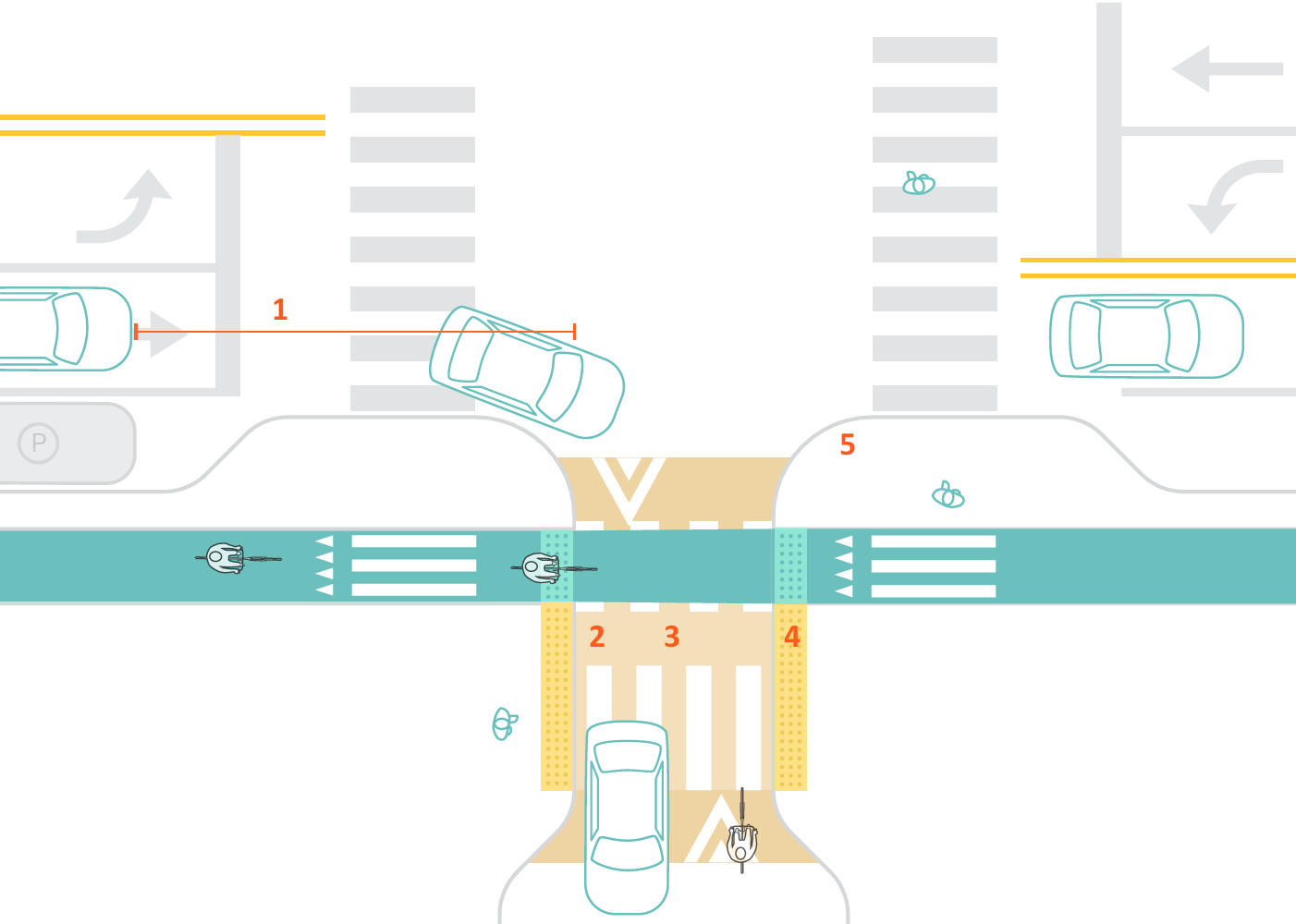The point where a bikeway crosses a minor street or driveway is a transition zone between a moderate-speed, signalized traffic environment and a very-low speed street. A well-designed minor-street intersection gives everyone—people driving, biking, and walking—a clear indication that bikes and pedestrians have the priority when crossing the minor street.
In addition, minor intersection redesigns are an opportunity to improve pedestrian safety and access as well. Many major streets have no existing crossing accommodations for pedestrians at minor streets. Minor crossing features, such as compact corners, can also reduce pedestrian crossing distances and increase visibility, creating a safer overall bicyclist and pedestrian environment.
Description
Minor street crossings use compact corners and raised elements to keep turn speeds low. The raised crosswalk and bikeway indicate to drivers that they are entering a low-speed environment, and must prepare to yield to other users. Traffic control devices, such as signals, are uncommon. Ensuring a clear approach sightline is essential to encourage drivers to yield to people in the bikeway or the crosswalk.
On minor street crossings, a number of design features work to keep speeds low. These include pedestrian islands or bulbouts, marked pedestrian safety zones, planters, in-street bike parking, or bike share stations. As in dedicated intersections, turn wedges and/or hardened centerline treatments can reduce turn speeds while providing turn flexibility for emergency vehicles and trucks.
Minor Street Crossing Diagram

1. Clear Sight Distance
A clear approach sightline gives drivers time to see and yield to people in the crossbike, and gives people on bike or on foot time to see and react to turning cars.
2. Crossbike & Crosswalk Markings
Crossbike and crosswalk markings provide conspicuity to people on bike or on foot. High-visibility markings provide the formal crosswalk and crossbike.
3. Raised Crossing
Raised crossings improve bicyclists’ visibility and reduce the speed at which vehicles turn by bringing the vehicle crossing up to (or near) the sidewalk level. In addition, the raised crossing is a signal to turning cars that through-moving bikes and pedestrians have the right of way.
4. Detectable Warning Surfaces
Detectable warning surfaces alert people who are blind or have low vision that they are entering an intersection.
5. Compact Corners
Small turn radii force turning drivers to slow down. If there is no raised crossing, the corner radius is the primary method to reduce turn speed.